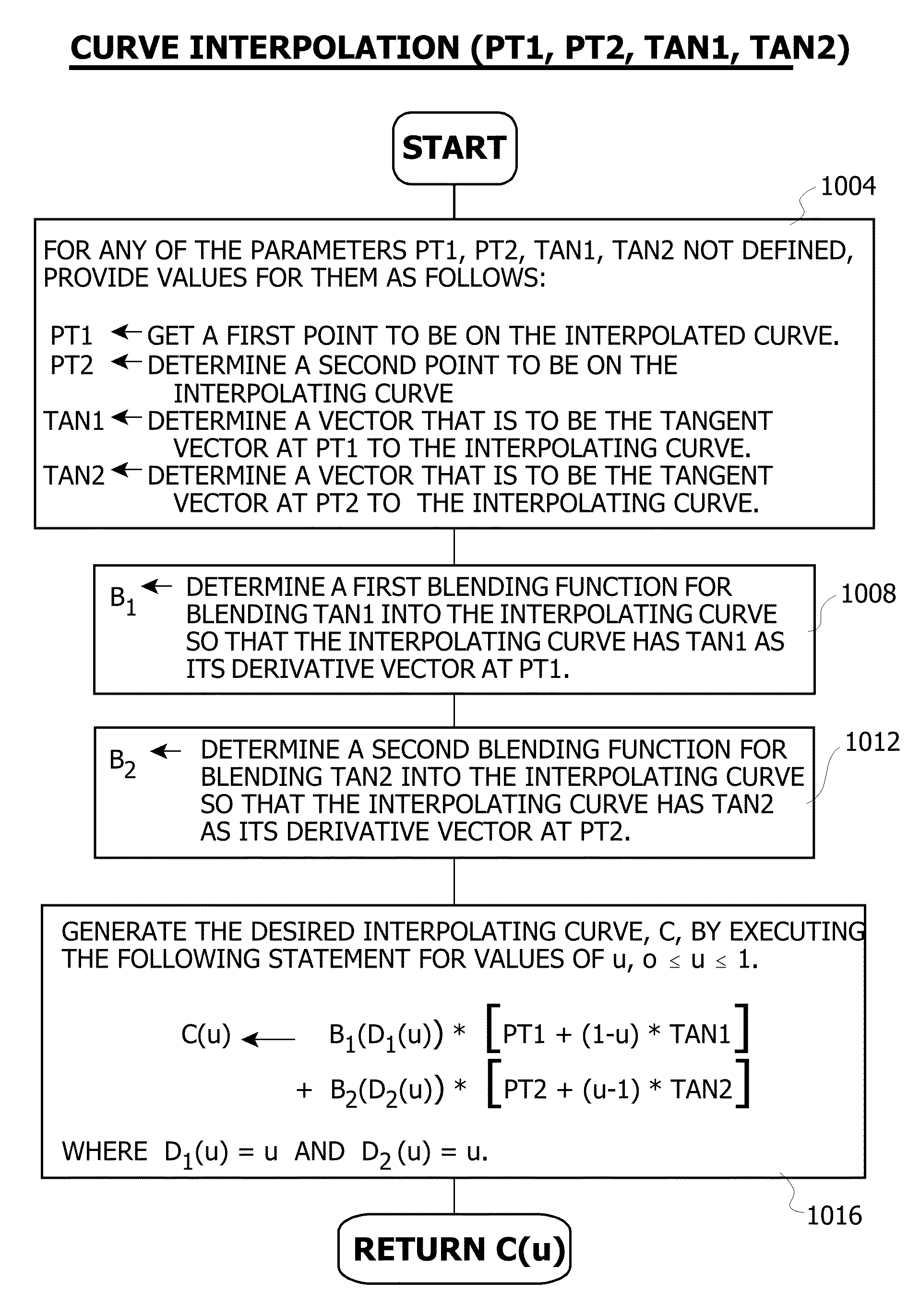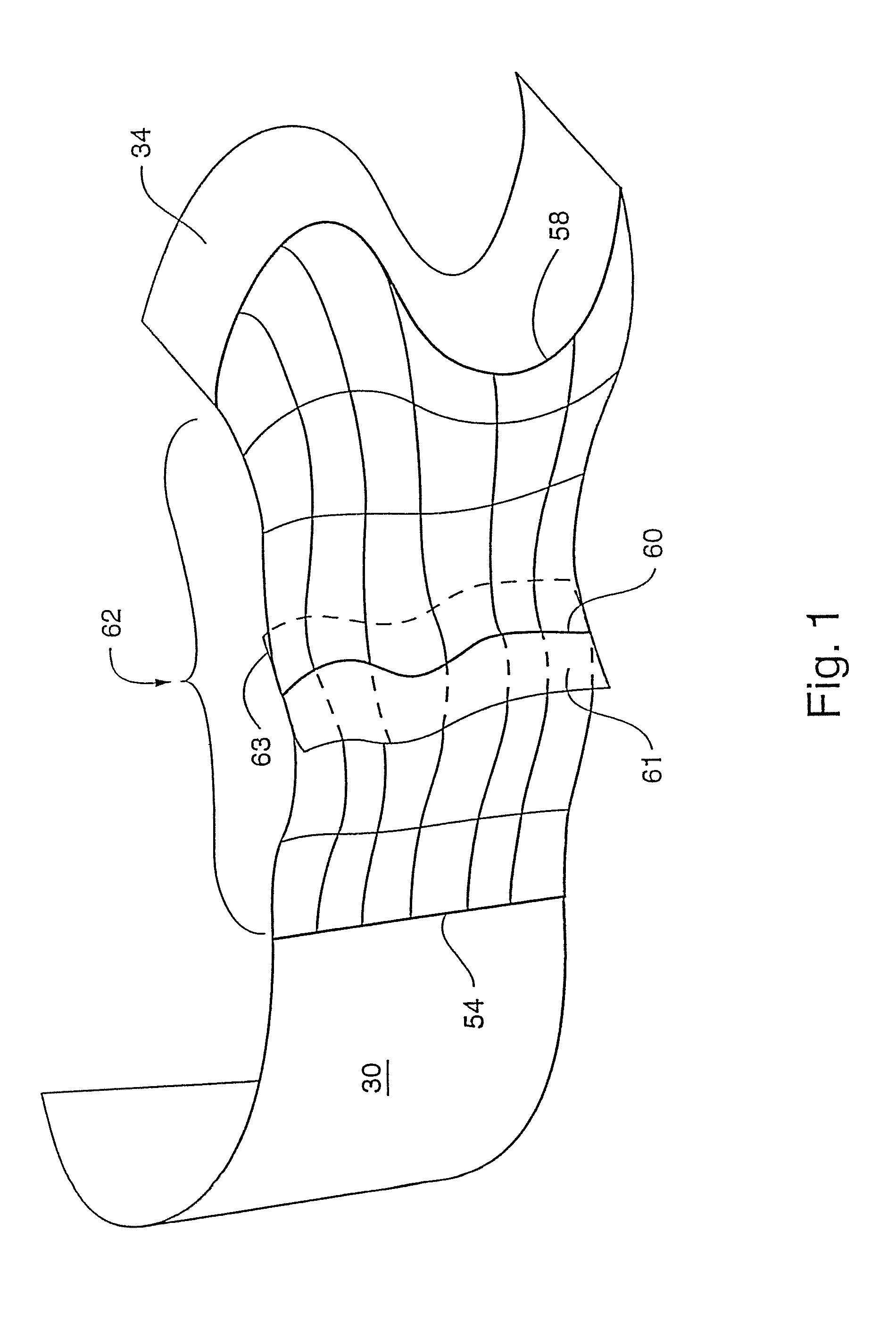Surface patch techniques for computational geometry
a surface patch and computational geometry technology, applied in the field of computer-aided design systems and methods, can solve the problems of inability to easily and efficiently interpolate from other subportions, no cad system wherein a designer (or more generally, a user) of geometric objects can easily and efficiently, and designers/users may encounter long delays. , to achieve the effect of improving visual and functional characteristics, and increasing the exactness of surface conversions
- Summary
- Abstract
- Description
- Claims
- Application Information
AI Technical Summary
Benefits of technology
Problems solved by technology
Method used
Image
Examples
case 3
dt=1−v;
case 4
dt=1−u;
end % of function DisRec
function wt=Weight(pat_idx,ft_idx,u,V)
wt=1.0;
switch pat_idx % Weights as in FreeDimension
case 1
for i=1:3
d=DisTri(i,u,v);
if i==ft_idx
dfac=1-d^2;
else
dfac=d^2;
end % if
wt=wt*dfac;
end % for
case 2
for i=1:4
d=DisRec(i,u,v);
if i==ft_idx
dfac=1−d^2;
else
dfac=(1^2;
end % if
wt=wt*dfac;
end % for
end % switch
% end of function Weight
function wt=RW(t) % Rational weight function
wt=(t−1)^2 / (2*t^2−2*t+1);
% end of function RW
% Define curves and ribbon boundaries
function rib=Ribbon(pat_idx,ft_idx,u,v)
switch pat_idx
case 1
% triangle
A=[100 0 −90; 0 0 0; −70.7 70.7 −90]; % Curves
B=[100 0 0; −35 35 0; 20 150 −90]
C=[50 0 0; −70.7 70.7 0; 100 120 −90];
D=[0 0 0; −70.7 70.7 −90; 100 0 −90];
RA=[0 100 0; 100 100 0; 0 0 60]; % Boundaries
RB=[0 1000; 100 100 0; 0 0 60];
RC=[0 100 0; 100 100 0; 0 0 60];
RD=[0 100 0; 100 100 0; 0 0 60];
dt=DisTri(ft_idx,u,v);
t=Trit(ft_idx,u,v);
case 2
% rectangle
A=[0 −100 −90; 0 0 0; 100 0 −90; 100 −100 −90]; % Curves
PUM
 Login to View More
Login to View More Abstract
Description
Claims
Application Information
 Login to View More
Login to View More - R&D
- Intellectual Property
- Life Sciences
- Materials
- Tech Scout
- Unparalleled Data Quality
- Higher Quality Content
- 60% Fewer Hallucinations
Browse by: Latest US Patents, China's latest patents, Technical Efficacy Thesaurus, Application Domain, Technology Topic, Popular Technical Reports.
© 2025 PatSnap. All rights reserved.Legal|Privacy policy|Modern Slavery Act Transparency Statement|Sitemap|About US| Contact US: help@patsnap.com



